The modern TV market is represented by a huge number of brands and models. And to choose the right one based on the "like / dislike" method is simply impossible. We propose to study in detail the main parameters of the TV selection.
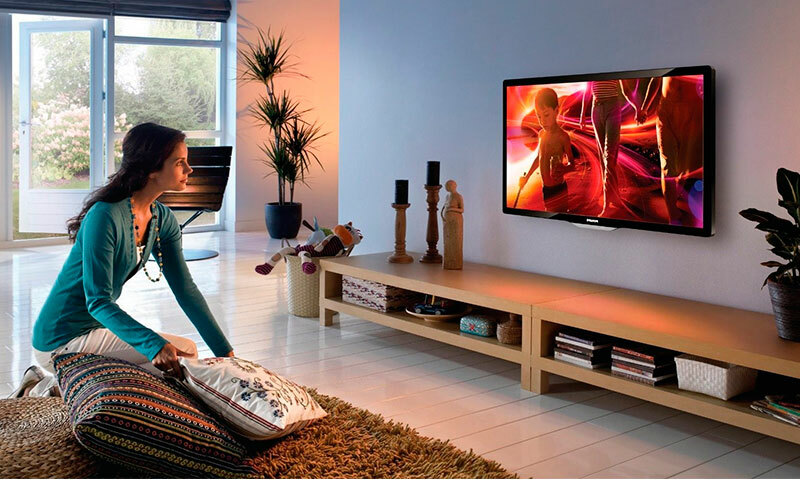
Contents:
- Which TV is best to buy: LCD, plasma, LED or LCD
- Choose a TV with 3D: active and passive. The essence of modern 3D in home TVs. The main advantages and disadvantages of modern 3D technologies
- Smart TV( smart TV) - what it is and how useful it is
- How to choose the right brand: does it matter? Common myths about
brands What TV is best to buy: LCD, plasma, LED or LCD
Modern TVs are divided into two types: plasma and liquid crystal. The latter in turn differ in the type of illumination and are divided into LED and LCD CCFL.Both of them are able to fight in the segment of high-priced TVs, but it's hard to find a cheap plasma. We suggest weighing all the pros and cons and figuring out which TV is right for you.
LCD TV: LED or LCD?
How the LCD TV works: a crystalline conductive liquid under pressure begins to change under the influence of an electric current. This fluid should be highlighted so that we can see the image. It is the way backlighting LCD TVs are divided into:
- LCD CCFL - a liquid crystal display with CCFL backlight( Cold Cathode Fluorescent Lamps - cold cathode fluorescent lamps).
- LED( Light-emitting diode) - a diode illumination: the semiconductor device creating a luminescence at passage through it of a current.
Make clear: LCD and LCD are synonyms, English and Russian abbreviations, respectively. The LED is the same LCD, but with a different type of backlight. So, we have LCD CCFL( referred to as LCD TV) and LCD LED( referred to simply as a LED TV).
What is their difference?
- LED TV has the best image quality, thanks to the design of the backlight. In the LCD, one lamp highlights the entire screen. LED TVs have a large number of LEDs. Therefore, it is possible to create a local darkening of the screen on one part of the screen and to strengthen the brightness on the other. This adds a big plus of contrast and color rendition.
- The TV with LED backlight significantly reduces power consumption. According to the research, the use of such a backlight allows saving up to 40% of the electricity required to use the TV.
- LED TVs do not use mercury. This is a great plus to environmental friendliness and safety of disposal.
- In LED backlight, it is possible to use diodes of different colors( red, green, blue) to improve the color rendering.
- Some LCD TVs are winning in front of a budget LED, in which color mismatch is possible due to a complex diodes control system. Therefore, simple LCD TVs exclude the disappearance of image details.
- LED TVs can not be different from simple LCDs if the diodes are located on Edge technology( around the perimeter of the screen).In this case, the local blackout, which was mentioned above - is impossible.
- Direct technology gives a uniform arrangement of diodes, because such TVs benefit from simple LCDs.
Thus, it is better to choose a TV LED.But be sure to pay attention to the technology of lighting, otherwise you will overpay for it, but to differ from the LCD CCFL the TV will not be almost!
LCD or plasma?
What is the LCD screen of the TV - we understood, now it remains to deal with the plasma. So, the technology of plasma panels is based on a matrix filled with gas( xenon or neon).The electrodes receive a voltage, ionize the gas. As a result, a plasma is produced, where UV radiation is caused, due to high-frequency discharge. It makes the substance shine.

The main differences between plasma and LCD:
- The plasma has a shorter screen update time. Note that in the latest models of LCD TVs, the response time is reduced to an inconspicuous, but the plasma here continues to lead.
- Plasma TVs have a larger viewing angle. The plasma panel technology itself plays a role here.
- Plasma has a tendency to burn out the display. Of course, for this you need to try, because it is designed for 30-40 thousand hours of use( LCD - 80 thousand hours), and this is about 9 years for 8 hours a day. With moderate viewing - enough for 20 years, which is acceptable for home use.
- As for power consumption and heat dissipation, LCD technology wins here. It is assisted by a passive cooling system.
- Image contrast. It is difficult to say what is better and what is worse. Lovers of contrast like the plasma, and those who love the image softer - will appreciate the LCD.
Liquid crystal or plasma - choose you. It remains only to compare the plasma with LED technology.
The main differences of plasma from the LED-TV:
- LED TV is more reliable and able to last longer than plasma.
- LED TVs are more practical than plasma ones with regard to power consumption.
- The plasma TV usually has a better resolution.
Not so long ago, a plasma TV was considered a luxury, now it has become quite affordable, LED technology is also seeking accessibility.
Which 3D TV is better active or passive
Let's move on to choosing a TV with support for 3D technology.3D-TV gives us a "three-dimensional" picture and the opportunity to find ourselves in the center of events that occur on the TV screen. Why is "three-dimensional" in quotes? The fact is that there is no full-fledged 3D in modern home TVs, so only a stereo image is called. A person looks with two eyes and sees one picture.
For the reduction of two pictures that each eye sees separately, the stereo analyzer answers. This is where 3D glasses come in to help you get a 3D image. As a result, each eye sees its own picture, hence the effect of presence. Therefore the name "3D" is only a convention. By and large, even in cinemas, three-dimensional technology is poorly developed, what can we talk about TVs. Nevertheless, there are qualitative models.
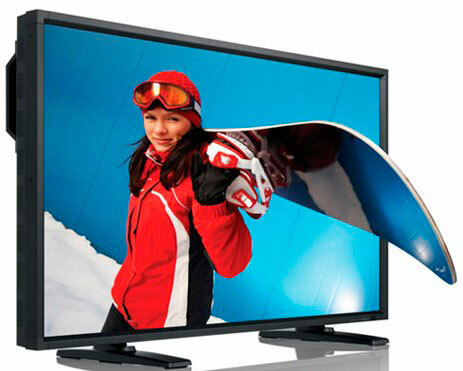
3D TV
Active technology: advantages and disadvantages
Let's see what active 3D is. It is also called "shutter".The name comes from the essence of the method: active glasses with gates and own power are used. This method is based on the inertia of the eye, while the picture is shown for the left and right eyes alternately. The shutters are inherently transparent liquid crystal displays.
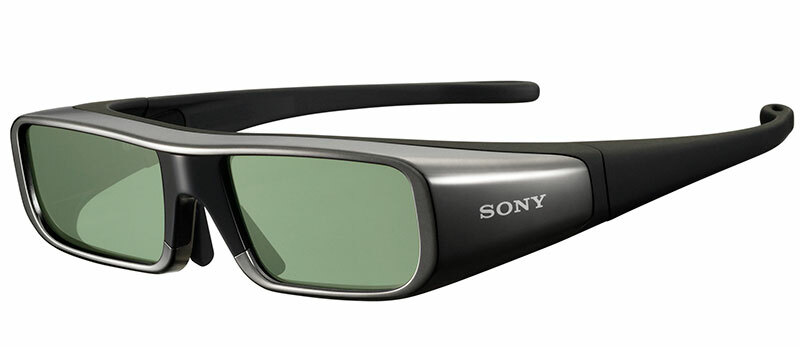
Active 3D glasses from Sony
Advantages of active 3D:
- High image quality;
- Maximum resolution for each eye( 1080p).
Disadvantages of active 3D:
- Strong eye fatigue. Not recommended for people with vision problems. If you look at 3D content slowly and infrequently, there probably will not be any problems.
- High price. The glasses themselves are quite expensive( up to 3 or more thousand rubles).In addition, the active method of 3D playback requires special additional playback devices( Blu-ray 3D player or BD3D ISO players).It is possible to play without these devices, but then to use the 3D capabilities to the maximum - it does not work out. In a word - you want active 3D - you have to spend not only on the TV!
- Loss of brightness( greater than that of passive 3D) and the probability of interference with bifurcated images.
It is believed that the active method is the most complex and progressive. But now the manufacturers face the challenge of upgrading the shutter 3D.The high quality of the picture goes to the detriment of the vision.
Passive 3D: pros and cons of
Briefly explain the essence of the method. Passive 3D is also called polarization. It is based on the effect of polarization: the picture is displayed on the screen for both eyes simultaneously. Because of this, the resolution of the image falls by half. This method has become quite widespread and is used mainly in budget televisions. This has its own peculiarity: high-quality 3D is difficult to obtain even with expensive equipment, but here - you know what you pay for. And not so much.
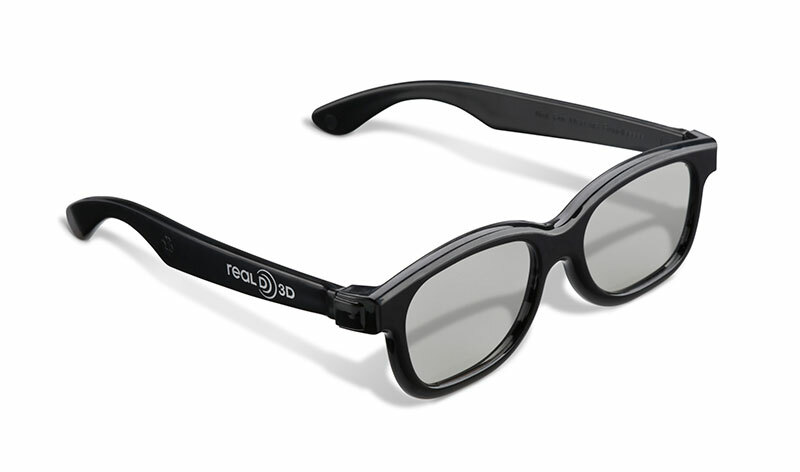
Passive 3D glasses
+ Advantages of passive 3D:
- The eyes get tired not so much as from the shutter glasses with LCD displays. After watching the movie, you do not want to run to the street or wash your eyes.
- Simplicity of construction. They do not require power and additional devices.
- Low cost. In addition - no need to buy an additional player, a simple TV with passive 3D is enough.
- Fairly tolerable image relative to the brightness of the picture.
- No flicker of the shutters.
- Disadvantages of the polarization method:
- Resolution is half that.1920x540 for vertical and 960x1080 for horizontal stereopairs.
Some manufacturers combine the shutter and polarization method of 3D playback. Summarize the findings on the choice of 3D technology when buying a TV.
Recommendations before buying a 3D TV
In order to determine which 3D viewing method will suit you personally, the above data will only be the basis for choosing. Let's give a brief recommendation before buying:
- Come to the store, select your favorite TV with active 3D, watch some video. If your eyes become tired quickly - then you need passive 3D.
- Pay attention to the table of diagonals of the TV.Active 3D will be relevant, with a full picture of 720-1080p. If the distance does not allow full consideration of 3D - there is no point in buying such a TV.It is worth paying attention to the passive option.
| 3D TV diagonal size( inches) | Optimal viewing distance 720p( m) | Optimal viewing distance 1080( m) | Minimum viewing distance at view angle 70 °( m) |
|---|---|---|---|
| 42 | 2.46 | 1.68 | 0.66 |
| 50 | 2.92 | 1.98 | 0.81 |
| 55 | 3.23 | 2.18 | 0.89 |
| 60 | 3.51 | 2.39 | 0.97 |
| 65 | 3.81 | 2.57 | 1,04 |
- Passive 3Dmore suitable for low-cost televisions. If the price for you is not of paramount importance, and you are chasing the best picture quality - plus the active one.
- Points for active 3D are almost 6( !) Times more expensive. If the number of viewers is small - you can fork out. And when the TV wants to see all the family or friends at the same time - it's worth thinking about.
It's not recommended to choose a TV with a big 3D accent. Quality 3D content is rather small. The technology of 3D in TVs is still very poorly developed. First of all - pay attention to the comfort for your eyes.
Smart TV: how useful it is and whether it is necessary at all
The main purpose of the Smart TV platform is:
- Use of special applications and Internet sites on which movies and music are stored;
- Combine all devices into a single network and display all files from these devices on the TV screen;
- Access to social networks( mainly Skype) without interruption from watching TV programs;
- Internet surfing;
- Using applications that extend the capabilities of the TV.

Let's start with a good one, with advantages. In models from 2013 onwards, support for keyboard and mouse connections has appeared. HDMI allows you to use the TV as a monitor with a high resolution. Several USB ports for connecting devices have appeared. Many users find applications useful and use Skype and other programs.
Here is an example with LG 3D Smart TV:
The reverse side of the coin is cheating the price, which can not always be got rid of: "smart TV" became the basis for the functionality of almost all high-quality modern TVs. Even the disadvantages of applications are pushed to the background when we are talking about the convenience of control: one finger from the remote control. Special control consoles began to appear, in particular for Sony and LG companies:
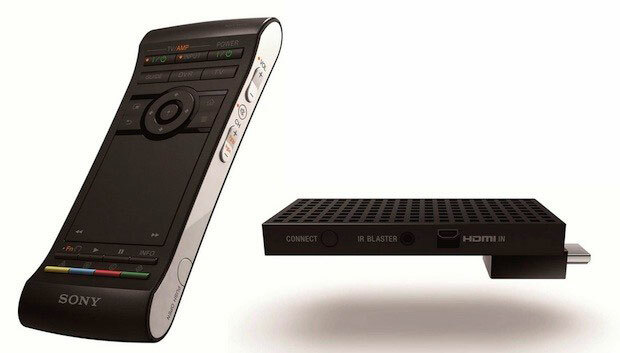
remote controllers from Sony

Manufacturers are actively trying to solve the problem of uncomfortable management of Smart TV
. The disadvantage of Smart TV from some manufacturers is the "shadowing" of the user for advertising purposes. One such example is the "smart TV" from LG, which sends data to the site of files recorded on external devices. Channel switching is also monitored. There is an option to disable such "shadowing", but in reality it does not work. In general, when choosing a TV, this is uncritical, but those who are seriously worried about anonymity, it's not particularly pleasant, as well as unnecessary advertising.
In summary: Smart TV in most cases is a simple addition, which is not taken into account when choosing a TV.You can download several free applications and stop at this. But we will take into account that it is developing, applications are improving, there is a possibility to connect various controllers, surfing on the Internet becomes more real. Perhaps in the future will be more useful.
Choosing a brand: does it matter
The brand of the TV is the first thing the buyer pays attention to, so we are arranged. Still, do not get hung up on the brand. An approximate rating shows that the first place is confidently held by Samsung, and we must give it its due. It is followed by Sony, Panasonic, LG, Toshiba, Philips. But these data mean the success of the company's operation on the Russian market. A decent TV can be found in any of these competitors.
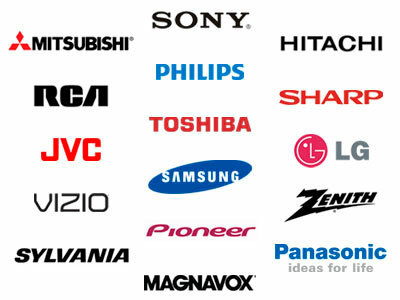
Myths about the brands
The two most common myths:
- Myth # 1: The company should specialize in specific equipment. Samsung, for example, takes almost all the necessary equipment in everyday life: from smartphones, tablets and computers to refrigerators and vacuum cleaners. And this does not mean that the quality of a particular product of this firm will be worse. Everything depends on the specific model and its characteristics.
- Myth # 2: Expensive means good. Take a closer look at other models, read reviews, compare characteristics. You can close your eyes and buy Sony with a full set of advanced features, and you can find a similar model at a lower price. Watch for stocks and real value.
The most universal brand is Samsung, which caught on the Russian market pretty well. The service network is developed, the company offers TVs of various price categories for almost all population groups. Panasonic, LG, Philips, Toshiba are trying to keep up with the ubiquitous Samsung and offer excellent options. If you talk about budget TVs, namely Sharp, JVC, Horizon, Ruby, Supra and others - you probably do not get the highest quality and a set of many useful features, but the quality of the picture - in principle, satisfied. This TV can be put in the kitchen.
When selecting the TV brand, pay attention to the availability of service centers. After all, in case of any malfunction during the warranty service, you will go to the store where you purchased the goods, and there they will send it to the service center. And if there is not one in your city, it will take a long time to wait. In this respect, Sony TVs are inferior, the network of service centers of this company is poorly developed. But Sony is considered the No. 1 brand in terms of quality, and cases of breakdowns are quite rare.
Conclusion: First of all, always pay attention to the picture quality and functionality of a particular model. Even eminent firms can make mistakes. Loyalty to the brand is formed with the use of technology, and not through advertising tricks!
Having studied the basic parameters of modern TVs, it is time to make a choice. Estesstvenno, the main factor here is the budget. Choosing a price segment, compare your favorite TVs. Which TV is better to buy - the best option for buying is LED TV.Do not focus on Smart-functions, if you are not sure whether they need you.
When choosing 3D - in most cases it is more profitable to buy a TV with passive 3D technology: you will not see much of the 3D, but enough to collect the whole family once a week-polarization glasses are enough. The brand does not play a key role. See the main offers of stores, promotions, and most importantly technical characteristics. And on the basis of the knowledge gained - safely go to the store and choose that TV, which you look comfortable with!
